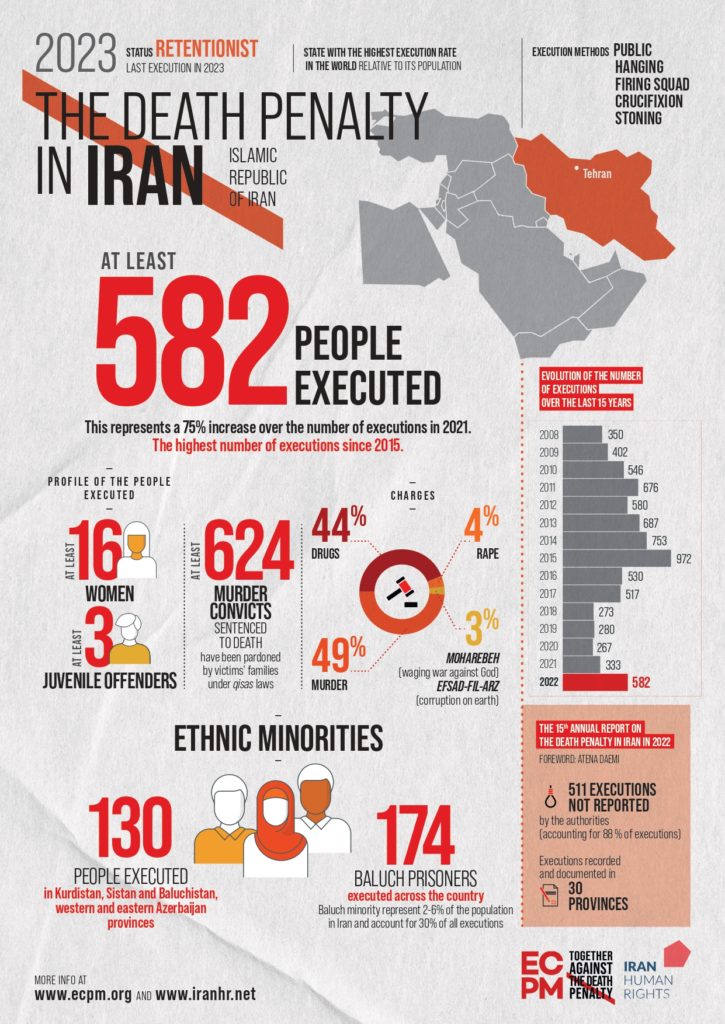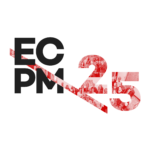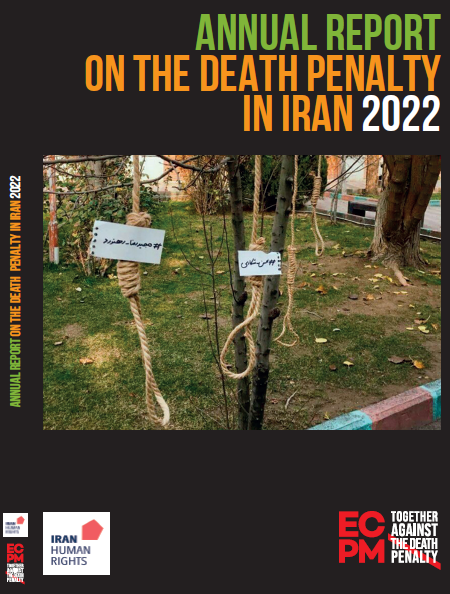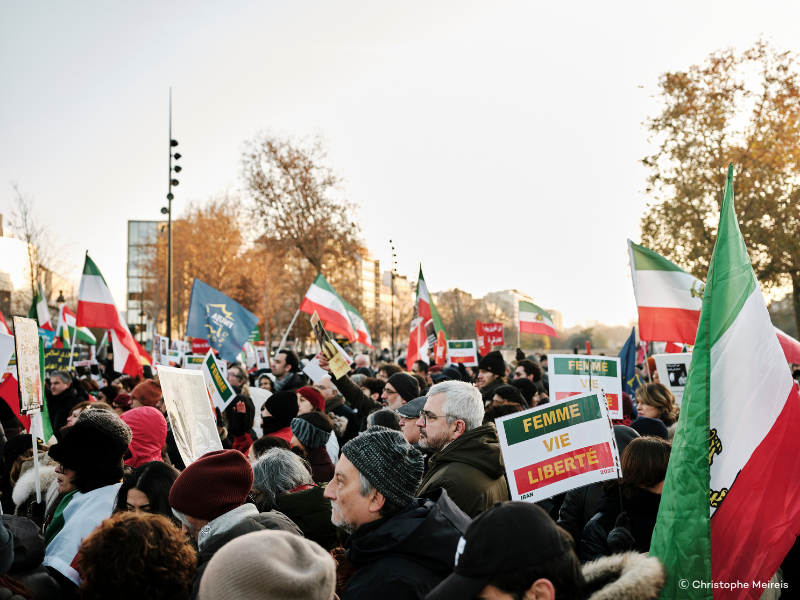
This new publication also sheds light on the issue of the death penalty in Iran in light of the nationwide protest movement that took place following the death of Jina (Mahsa) Amini in police custody on 16 September 2022. While the global impact of the uprising did not prevent the sentencing of several protesters to death, the strong reactions of the international community strongly curtailed the effective implementation of these sentences.
Read the report
Two young protesters, Mohsen Shekari, 22, and Majidreza Rahnavard, 23, were nevertheless executed on 8 and 12 December 2022. Majidreza Rahnavard was also the second convicted person to be publicly hanged in 2022, marking the return of executions to the streets of Iran after two years without a single one. It should be noted that the Report does not include in its statistics the at least 537 people killed during the protests or other extrajudicial killings inside and outside the prisons. Throughout its 100 pages, the report demonstrates the insidious link between the increase in executions and the popular protests that have been taking place for months in all provinces of the country, as Mahmood Amiry-Moghaddam, Director of Iran Human Rights, points out:
“In order to instil fear in the population and in the protesting youth, the authorities have intensified the executions of prisoners who have been sentenced for non-political charges such as drug-trafficking. These prisoners are the low cost victims of the Islamic Republic’s execution machine.”
In this regard, the increase in executions for drug-related offences is alarming (up 60% from 2021), accounting for more than half of the executions that took place in the wake of the protests, and 44% of the total executions in 2022. This increase indicates the use of the death penalty as a means of pressure and, more broadly, as a repressive lever to manage the country’s social problems. Commenting on the alarming rise in drug-related executions, ECPM Director Raphael Chenuil-Hazan said:
“The lack of reaction by the UNODC and donor countries to the reversal of these reforms sends the wrong signal to the Iranian authorities. Abolition of the death penalty for drug-related offences must be a precondition for all future cooperation between UNODC and Iran on combating drug trafficking.”
The death penalty in Iran is nevertheless the subject of increasingly visible protests among the population, such as the demonstrations by families of death row inmates that have taken place in front of official court buildings for several weeks in a row. This report confirms that this underlying trend has been growing since 2020, and was further accelerated by the protests that followed the death in custody of Jina (Mahsa) Amini. In addition, cases of forgiveness outnumber those of qisas (retaliation in kind), with the acceptance of diya (blood money) and pardon being two procedures increasingly followed. This development goes hand in hand with the strengthening of the forgiveness movement, which allows Iranian citizens to express their opposition to the death penalty in a roundabout way, thus escaping possible persecution by the authorities. In parallel to the launch of this new report, IHRNGO and ECPM are calling for a moratorium on the death penalty in Iran, and for a collective awakening so that states with close diplomatic ties with the country also carry this message about respect for human rights and the abolition of the death penalty:
“In order to stop the death machine set up by the Iranian regime, the international community and civil society, whether they are on the spot or not, must actively show their opposition each time a person is executed in the country”
Mahmood Amiry-Moghaddam
Key figures
- At least 582 people were executed in 2022, a 75% increase from 333 in 2021
- 71 executions (12%) were announced by official sources, compared to an average of 16.5% in 2021, and 33% in 2018-2020
- 88% of all executions included in the 2022 report (511 executions in total) were not announced by the authorities
- At least 288 executions (49% of total executions) were related to murder convictions, the highest number in 15 years.
- At least 256 executions (44% of total executions) were related to drug convictions, up from 126 in 2021, and an average of 24 per year between 2018 and 2020.
- Only 3 of these 256 drug-related executions have been officially announced
- At least 3 juvenile offenders were among those executed.
- At least 16 women were executed.
- At least 15 people, including two protesters and one Kurdish political prisoner, were executed wage charges of Moharebeh (waging war against God) and Efsad-fel Arz ( Corruption on earth)
- At least 273 executions in 2022 and more than 4029 executions since 2010 have been carried out on the basis of death sentences handed down by revolutionary courts.
- At least 624 prisoners sentenced to death on murder charges have been pardoned by the families of murder victims under ‘qisas’ laws.


